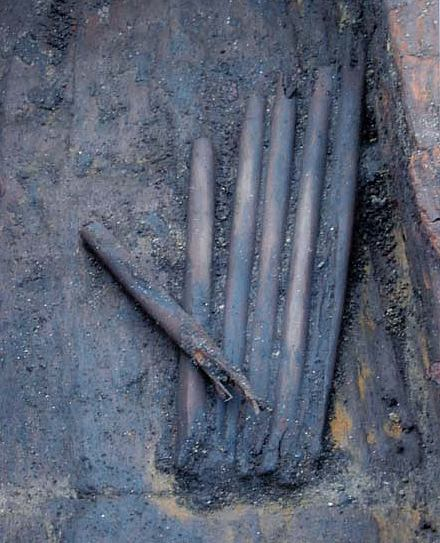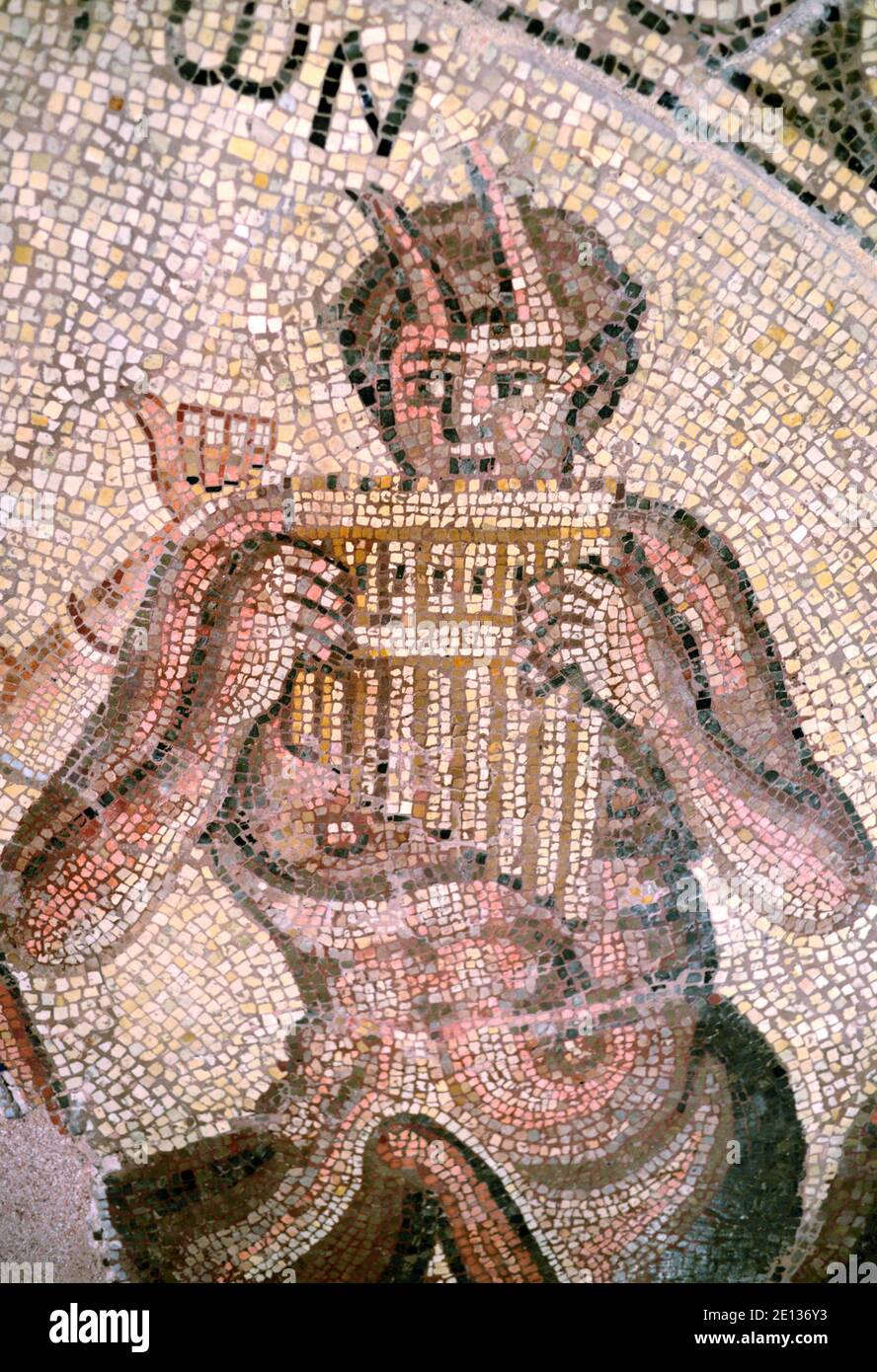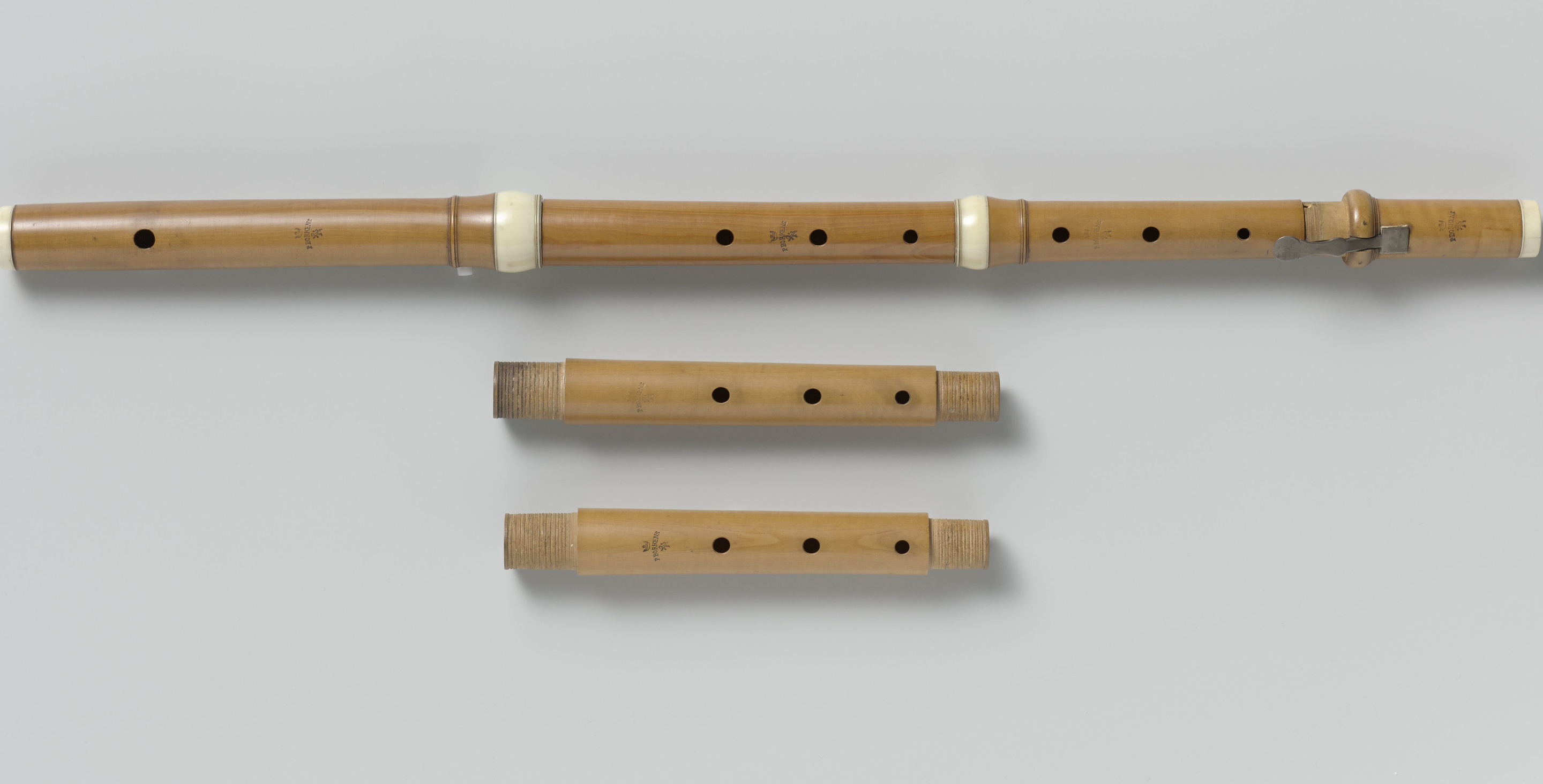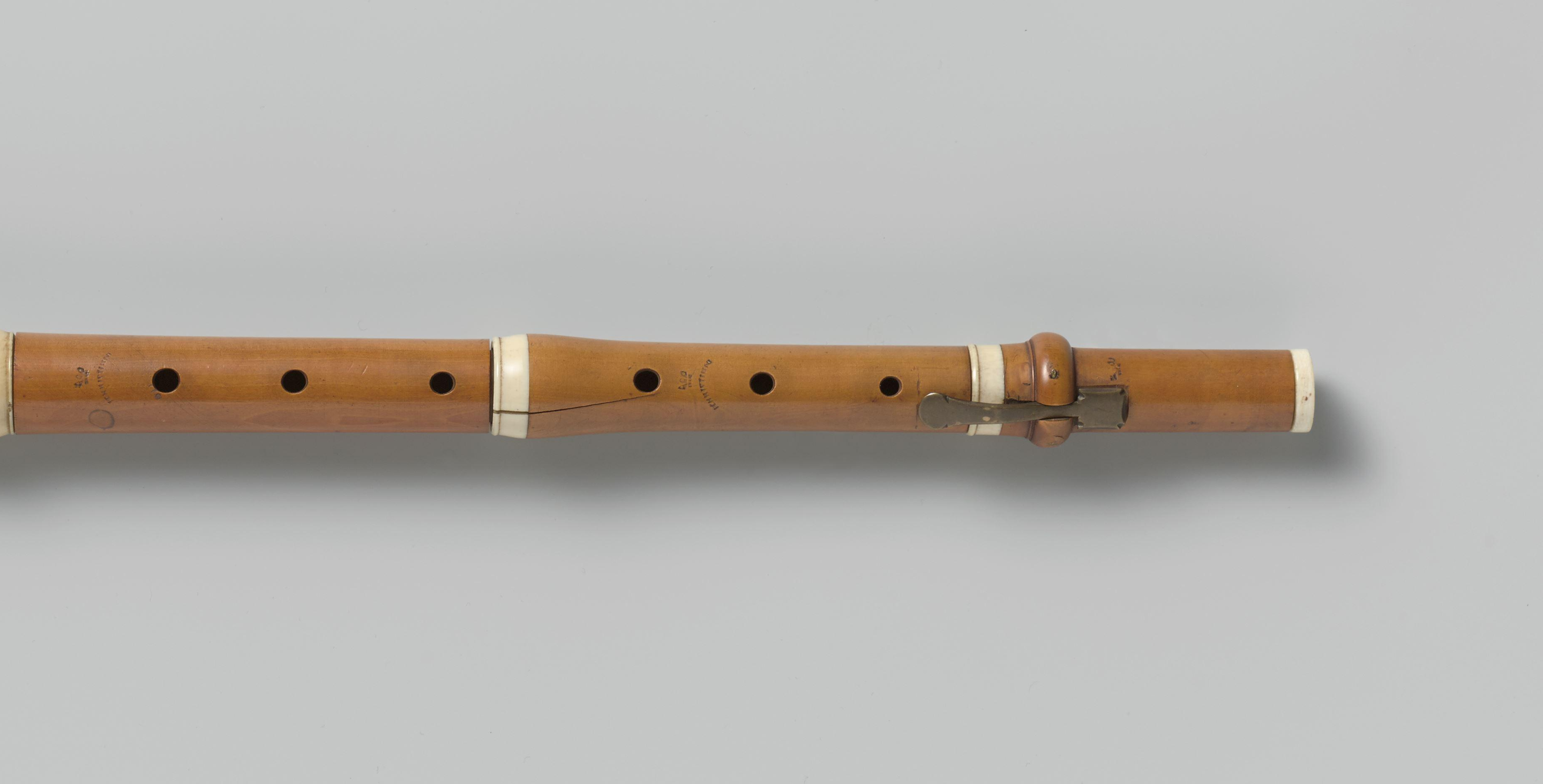A historical Overview of Flute Materials
The flute is one of the oldest instruments in the world. Most likely, after humans began making music with percussion, they blew across reeds to make sounds. And so the basis of the flute was born. They are an instrument shrouded in mystery and ritual, but that is not what this text will be focusing on. Rather I would like to ask the question how we went from making flutes out of the bones of animals, to wood and today to using precious metals such as gold and silver? What makes this material so much more popular than the wood that had been the standard in European territory for hundreds of years, even though it arguably is more difficult to acquire? In this text I will explore the different materials used throughout history for the European Flutes, and when and why it changed.
Bone and Clay
[1] The first flutes were made of birds’, most likely vultures’, wingbones. These long, narrow and naturally hollow bones lended themselves nicely to making an instrument. Fragments of these kinds of flutes have been found in Germany and carbon dating shows them to be the oldest, still surviving musical instruments in the world, at between 42.000 - 43.000 years old. Other flutes at this time could’ve been made from mammoth ivory or river reeds. [2]

Fragments of clay vessel flutes, similar to ocarinas, estimated to be from around 5500 BC have been found in several parts of Europe, such as Germany, Hungary and Bulgaria. They are assumed to be from the first farmers of Europe, whose new sedentary lifestyle with houses, new tools and clay burning ovens, enabled them to create these musical instruments. Still now, the longbones of birds were still being used for instruments as well.

Bone and clay were of course not the only materials used for music making. From painted pictures in Egypt and carvings in the Mediterranean, we know that reeds or cane were also used. These have sadly not been able to survive until today. We can assume that these plant materials were used because they also are naturally hollow and grow by most rivers. This is where humans would settle, and thus it made it a very easily acquirable resource.

The Wicklow Pipes
[3] One particularly interesting find is the Wicklow Pipes, a set of wooden pipes found in Ireland and dated to be from the early Bronze Age, around 3000 BC. It is not entirely sure how these pipes were used, if they were part of a langer instrument, and if this was the case, how that instrument then was played. These pipes were carved from a larger piece of yew, with a straight bore that seems to have been drilled out. The timber had been carefully chosen, as it has no knots and the grain pattern is relatively straight. The person who made these pipes must have been a very skilled craftsman, as later bronzage pipes found were split and later rejoined after hollowing. The choice of yew most likely had several reasons, such as availability and cultural relevance. Some estimates suggest that years earlier nearly 80% of trees growing in northern Europe might have been yew. By the bronze age this had changed, but the tree still had an important role in folktale at the time. It is a very sturdy and long lived tree, with many ancient yew tools found all over Europe. This longevity has given the tree a myth of being immortal and thus having a connection to the Otherworld. Perhaps this also influenced the maker to choose it for his instruments.

Panflutes
[4]The Panflute is an instrument which consists of four to eighteen cane tubes with no lateral holes, bound together with other plant material like flax or cane. These kinds of cross-blown pipes were present on all continents and originate in several places across the world at a similar time of cultural development. This means they appeared at different times and different, non connected geographical locations. [5] Again, this probably stems from reeds being an easily available resource near most rivers, and therefore near human settlements. [6]

There is evidence of panpipes in cultures all over Europe, from Vikings to Romans, but also in Southamerica and Asia. Many depictions of people playing panpipes have also been found in Egypt and the Mediterranean. [7]
The early Mediaeval flutes and their Renaissance cousins

There are no surviving transverse flutes from the Middle Ages, and thus we do not know a lot about how it sounded, was built or looked. As far as we can assume, the instruments were very similar to the Renaissance flutes, likely with 6 finger holes and an embouchure hole. The biggest difference to the flute’s later evolutions is that the mediaeval flute is depicted to have been played to the left. These flutes could have perhaps been made from bone or wood, with a cylindrical bore and in one piece.
In contrast, we do have some surviving Renaissance flutes. These flutes were now played to the right, as the modern flute is today. The earliest known ones are made from one piece of wood and came in three basic sizes, the bass, the tenor/altus and the descant. These would often form a consort, an ensemble of flutes in different registers to be played together.

An important innovation during this time was splitting the bigger bass flute into two interconnecting parts. Boring these large pieces of wood was very difficult, both from the crafting perspective but also acquiring such a large, intact piece to make the instrument from. The split also made it easier to tune, which expanded the performance opportunity of the flute greatly as pitch varied from region to region. [9]
Bach and the Baroque
The Baroque flute, also called the Traverso, was already worlds away from its predecessor the renaissance flute. It was now conical, changing the colour and quality of sound completely. It was also made in sections, first three and later even four. It has six finger holes on the body and one key on the footjoint covering another hole. These flutes were made out of different types of hardwood, for example boxwood, ebony or grenadilla. These types of timber are still called “tonewoods” today, as they have a higher density and thus produce a clearer and stronger sound. [10]
[11]The connecting rings between the sections were made of Ivory. It was to reinforce the sockets as the ivory is stronger than wood and prevented cracking. Ivory was and still is a very expensive material and so it elevated the flute to a luxury item played by kings and noblemen. Less expensive flutes from the time were made with black horn rings instead of ivory. [12]

The one key on the footjoint was made from brass or silver, presumably because it was easier to work with for the small mechanisms needed.

Flutemakers Heaven - Laurent’s Crystal Flute
In 1806 Claude Laurent presented his first crystal flute at the Industrial Exhibition in Paris. For this feat Laurent, who was a watchmaker by trade, received a silver medal and later the same year, the patent for the manufacture of glass flutes. Laurent had been experimenting with wood and ivory for his flutes before, but none had been able to produce such a clear sound like the crystal flute. Multiple specialists agreed on the stability and temperament of the glass flute. It was less susceptible to problems with tuning in humidity or temperature changes than wood or ivory flutes. On top of this it was easier to play, with a more vivid sound and further advanced mechanisms. So why did we stop making flutes out of glass? [13]

On top of the obvious futility of the material, the crystal flute was heavy, which made it cumbersome to handle. Furthermore it was very expensive and complicated to produce, so much so that to this day the method of making instruments out of glass is somewhat of a mystery. This heightened these flutes to a standard of luxury impossible for most to obtain. Very few flute players were ever able to get their hands on a crystal flute by Laurent, and it became quickly associated with the aristocracy. The high cost and intricacy of manufacture eventually led to the discontinuation of the instruments made of glass. [14]

Böhm’s Revolution
Theobald Böhm is the one man credited with making the flute what it is today. During the 18th century more holes had been drilled into the flute to produce notes that had been only possible to play with forked fingerings thus making them softer and more difficult. For the new holes keys had to be added and these mechanical systems where called “the simple system”. The goldsmith Böhm started making such simple system flutes, made of tropical wooss like grenadilla, with eight or nine keys in metal, in the late 1820s, but twenty years later in 1847 he was making flutes completely made of metal. He experimented with his materials, using silver, gold, nickel and copper for his flutes, and still today these metals (except for copper) are the ones used in flute making today. Many at the time argued that these instruments were not “true flutes” and that they had lost the charm and effect of what a flute is meant to be, but now, over 150 years later we still make flutes with systems that have barely changed from Böhms original innovation. What was it that was so extraordinary about them? [15]
Böhms metal flutes were cylindrical with fully mechanised keys covering every tonehole. The cylindrical shape and sturdiness of the material made it possible to make bigger toneholes, as on a conical flute, the holes cannot be bigger than the bore itself. The distance between the holes was based on “scientific principles” he had learned after studying acoustics a few years earlier. These changes made the tone of the instrument richer, more flexible and louder than its predecessors.
Another benefit of making the body of the flute in metal as well, was that it made mounting Böhm’s keywork system easier.


The modern flute and the Böhm flute are nearly identical, and it is a big jump from most transverse flutes that had come before. But with wooden flutes making a comeback in popularity, who knows what the future prefered material for this instrument will be. [16]
-
Pomberger, Kotova & Stadler (2017) “Flutes of the first European farmers” https://www.jstor.org/stable/26338397?searchText=flutes%20through%20history&searchUri=%2Faction%2FdoBasicSearch%3FQuery%3Dflutes%2Bthrough%2Bhistory%26so%3Drel&ab_segments=0%2FSYC-6490%2Ftest_segment_6&refreqid=fastly-default%3A92d2c249ddc2cf4dc583a1baf0d7f2aa ↩︎
-
BBC (2012) “Earliest Music Instruments found” https://www.bbc.com/news/science-environment-18196349 ↩︎
-
Holmes & Molloy “The Charlesland (Wicklow) Pipes” https://www.ancientmusicireland.com/wp-content/uploads/2020/11/Holmes_Molloy_paper_Wicklow_Pipes.pdf ↩︎
-
Britannica “panpipe” https://www.britannica.com/art/panpipe ↩︎
-
White & Puscoiu “History of the Panflute” https://panflute.net/history-of-the-panflute.html ↩︎
-
Cartwright (2012) “Pan Flute” fhttps://www.worldhistory.org/Panpipes/ ↩︎
-
K.L. Holmes (2013) “Flute Lore, Flute Tales: Artifacts, History, and Stories About the Flute” https://books.google.nl/books?id=qdpOCAAAQBAJ&pg=PT64&lpg=PT64&dq=clay+flutes+history+europe&source=bl&ots=kNVRHFmRTs&sig=ACfU3U2GbaK-SFqlw1AocWUI_YAlZQ_EDg&hl=de&sa=X&ved=2ahUKEwj_nt6b_t_4AhUzh_0HHcZnAAQQ6AF6BAg4EAM#v=onepage&q=clay%20flutes%20history%20europe&f=false ↩︎
-
Reisenweaver (2011) “The Development of the Flute as a Solo Instrument from the Medieval to the Baroque Era” Music and Worship Student Presentations. 8. https://digitalcommons.cedarville.edu/cgi/viewcontent.cgi?article=1007&context=music_and_worship_student_presentations ↩︎
-
Case Western Reserve University “Flute (Renaissancew” https://caslabs.case.edu/medren/renaissance-instruments/flute-renaissance/ ↩︎
-
Martin Doyle Flutes “Woods used for making flutes” http://www.martindoyleflutes.com/woods.html ↩︎
-
Case Western Reserve University "Flute /Baroque) https://caslabs.case.edu/medren/baroque-instruments/flute-baroque/#:~:text=The%20baroque%20flute%20possesses%20an,than%20on%20the%20modern%20flute. ↩︎
-
Berney, Boaz Berney Flutes “Wood” https://www.berneyflutes.com/pages/01home/01home.html#:~:text=Most%20historical%20flutes%20were%20made,cracking%20at%20this%20weak%20point. ↩︎
-
Wikipedia 2020 “Crystal Flute” https://second.wiki/wiki/flauta_de_cristal ↩︎
-
Eric the Flutemaker (2019) “The history of the Flute” https://eriktheflutemaker.com/blogs/articles/8140743-history-of-the-flute ↩︎
-
Unkown author “19th century Boehm flutes” http://www.oldflutes.com/boehm.htm ↩︎
-
Additional References: Florencia Gomez and Personal notes from the Historical Developement course (2021/2022) ↩︎